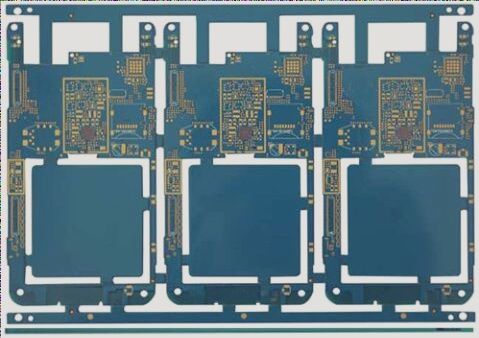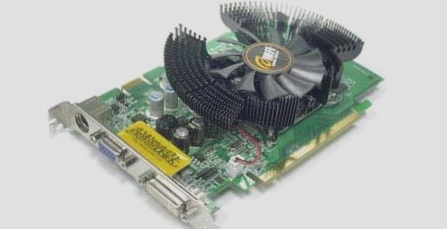3. Electroless Nickel/Immersion Gold
The electroless nickel/immersion gold process is more complex compared to organic coating. It provides a thick armor-like protection for the PCB, unlike organic coatings which act as anti-rust barriers. The electroless nickel/immersion gold process enhances the electrical properties of the PCB over long-term use. By coating the copper surface with a thick layer of nickel-gold alloy, the PCB is safeguarded for an extended period. Additionally, this process offers environmental tolerance that is not found in other surface treatment methods. Nickel plating is essential to prevent diffusion between gold and copper; without the nickel layer, gold would diffuse into copper within hours. Furthermore, nickel’s strength limits expansion in the Z direction at high temperatures. Electroless nickel/immersion gold also prevents the dissolution of copper, benefiting lead-free assembly. The process involves acid cleaning, micro-etching, pre-dipping, activation, electroless nickel plating, and chemical immersion gold. With nearly 100 chemicals involved in 6 chemical tanks, process control is challenging.
4. Immersion Silver
The immersion silver process falls between organic coating and electroless nickel/immersion gold in terms of complexity. While it is simpler and faster than electroless nickel/immersion gold, it still provides good electrical performance. Silver acts as the “little brother” of gold, maintaining good solderability even when exposed to heat, humidity, and pollution, albeit losing its luster. Unlike electroless nickel/immersion gold, immersion silver lacks the physical strength provided by a nickel layer. However, it offers good storage properties, ensuring minimal assembly issues after years of immersion. Immersion silver involves a displacement reaction, resulting in a sub-micron pure silver coating. Occasionally, organic matter is included in the process to prevent silver corrosion and mitigate silver migration. Measurement of this thin layer of organic matter is challenging, with analysis indicating its weight is less than 1%.
5. Immersion Tin
The immersion tin process shows promise as it can match any type of solder. However, issues such as tin whisker formation in previous PCBs and tin migration during soldering limit its application. Organic additives have been introduced to the immersion tin solution to create a granular structure, enhancing thermal stability and solderability. Immersion tin forms a flat copper-tin intermetallic compound, ensuring good solderability without the flatness problems associated with hot air leveling. The absence of electroless nickel plating allows for strong bonding between the copper and tin intermetallic compounds. Immersion tin boards have a limited shelf life, requiring assembly to be conducted promptly following the immersion tin process.
Other Surface Treatment Processes
Nickel-gold electroplating and electroless palladium plating are widely used surface treatment processes in the industry. Electroplating nickel gold, the original PCB surface treatment technology, involves nickel plating followed by a layer of gold to prevent diffusion between gold and copper. Two types of electroplated nickel gold—soft gold (pure gold) and hard gold (contains cobalt for hardness)—are utilized for different applications. Selective plating is common to reduce gold usage. Selective plating is favored due to challenges in controlling the electroless nickel/immersion gold process. Welding on electroplated gold can cause brittleness, hence it should be avoided. Electroless nickel/immersion gold, being thin and consistent, rarely experiences brittleness. Electroless palladium plating is akin to electroless nickel plating, utilizing a reducing agent to deposit palladium on the catalytic surface. Palladium enhances welding reliability, thermal stability, and surface smoothness.
The electroless nickel/immersion gold process is more complex compared to organic coating. It provides a thick armor-like protection for the PCB, unlike organic coatings which act as anti-rust barriers. The electroless nickel/immersion gold process enhances the electrical properties of the PCB over long-term use. By coating the copper surface with a thick layer of nickel-gold alloy, the PCB is safeguarded for an extended period. Additionally, this process offers environmental tolerance that is not found in other surface treatment methods. Nickel plating is essential to prevent diffusion between gold and copper; without the nickel layer, gold would diffuse into copper within hours. Furthermore, nickel’s strength limits expansion in the Z direction at high temperatures. Electroless nickel/immersion gold also prevents the dissolution of copper, benefiting lead-free assembly. The process involves acid cleaning, micro-etching, pre-dipping, activation, electroless nickel plating, and chemical immersion gold. With nearly 100 chemicals involved in 6 chemical tanks, process control is challenging.
4. Immersion Silver
The immersion silver process falls between organic coating and electroless nickel/immersion gold in terms of complexity. While it is simpler and faster than electroless nickel/immersion gold, it still provides good electrical performance. Silver acts as the “little brother” of gold, maintaining good solderability even when exposed to heat, humidity, and pollution, albeit losing its luster. Unlike electroless nickel/immersion gold, immersion silver lacks the physical strength provided by a nickel layer. However, it offers good storage properties, ensuring minimal assembly issues after years of immersion. Immersion silver involves a displacement reaction, resulting in a sub-micron pure silver coating. Occasionally, organic matter is included in the process to prevent silver corrosion and mitigate silver migration. Measurement of this thin layer of organic matter is challenging, with analysis indicating its weight is less than 1%.
5. Immersion Tin
The immersion tin process shows promise as it can match any type of solder. However, issues such as tin whisker formation in previous PCBs and tin migration during soldering limit its application. Organic additives have been introduced to the immersion tin solution to create a granular structure, enhancing thermal stability and solderability. Immersion tin forms a flat copper-tin intermetallic compound, ensuring good solderability without the flatness problems associated with hot air leveling. The absence of electroless nickel plating allows for strong bonding between the copper and tin intermetallic compounds. Immersion tin boards have a limited shelf life, requiring assembly to be conducted promptly following the immersion tin process.
Other Surface Treatment Processes
Nickel-gold electroplating and electroless palladium plating are widely used surface treatment processes in the industry. Electroplating nickel gold, the original PCB surface treatment technology, involves nickel plating followed by a layer of gold to prevent diffusion between gold and copper. Two types of electroplated nickel gold—soft gold (pure gold) and hard gold (contains cobalt for hardness)—are utilized for different applications. Selective plating is common to reduce gold usage. Selective plating is favored due to challenges in controlling the electroless nickel/immersion gold process. Welding on electroplated gold can cause brittleness, hence it should be avoided. Electroless nickel/immersion gold, being thin and consistent, rarely experiences brittleness. Electroless palladium plating is akin to electroless nickel plating, utilizing a reducing agent to deposit palladium on the catalytic surface. Palladium enhances welding reliability, thermal stability, and surface smoothness.


